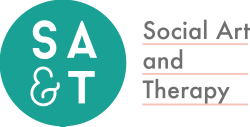The first month of SA&T has flown by, as the months always seem to when based in the city. Time really passes quickly in urban areas.
So, the Ltd vs charity decision, pretty sure it was the right one. The paperwork for setting up a charity would have been time consuming, and though it is sad that I won’t be able to provide therapy for free to people who can’t afford to pay, for a while at least; it also appears that with charitable status I would be battling for funding in increasingly aggressive circles and that is not a focus I want to have.
My Community Interest Company (CIC) questions have been triggering some off putting answers. Also admin heavy, less people understand the paperwork, including those in the field of tax and accounting. As an employee of a CIC, even as a founding member, others would have more final decision making power, and over time as circumstances change the company has very little flexibility compared to Ltd. You can apply for funding, but that also determines the company direction for many years to come, even when the projects have been concluded and moved on from.
With a limited company I expect 20% of the work can be voluntary, or subsidised (by personal choice) if / when the other 80% is paid properly, but that will take a while to build up. It has started though, with a small and varied cluster of clients. I have used the home therapy space, and art studio space, both of which feel calm and containing. I cover my own art in the studio and use bamboo and wicker screens to define a neutral space for during therapy sessions.
An unexpected piece of work was expert witness report writing and court attendance, I had thought that was more the domain of psychiatrists and specialist psychologists but apparently not. The difference is the experience you draw from, so I can contribute from a therapist perspective, as a mental health professional. I was clear that therapists do not diagnose (assign labels) nor prescribe drugs.
Agency that I do have, is there is nothing to stop me from prescribing music… So there is now a keyboard and guitar in the art box. When choosing to train in Art Psychotherapy at Goldsmiths, it was with the intention of gaining a traditional psychodynamic grounding, with as well trodden path as possible in this hard to evidence field, and then branch out once qualified and with experience. Goldsmiths was frustrating at times, with their rigid base in psychoanalytic theory, but the boundary setting has proven helpful experience to build upon and add further tools.
Along with this not too frequent blog (about one post a month I predict), I’m also pottering with the website, adding content here and there with the aim to give it a more designed arrangement by the end of the year. It still looks like a launch on the 1st October is realistic, once I’ve settled into working with clients through a company structure.
Lovely to see a text of some research I was involved with in Sutton has been published recently, (Making Safeguarding Personal), and I aim to write about EMDR and Art Therapy with people who hoard soon too, to share that information.
I'm also thinking of EMDR for sports people who have lost their confidence - it's proven to help with phobias but I can see it being helpful where traumatic events / frightening experiences such as bad falls when rock climbing, or cycling, have triggered a loss in ability to participate in or enjoy the activity.
So, the Ltd vs charity decision, pretty sure it was the right one. The paperwork for setting up a charity would have been time consuming, and though it is sad that I won’t be able to provide therapy for free to people who can’t afford to pay, for a while at least; it also appears that with charitable status I would be battling for funding in increasingly aggressive circles and that is not a focus I want to have.
My Community Interest Company (CIC) questions have been triggering some off putting answers. Also admin heavy, less people understand the paperwork, including those in the field of tax and accounting. As an employee of a CIC, even as a founding member, others would have more final decision making power, and over time as circumstances change the company has very little flexibility compared to Ltd. You can apply for funding, but that also determines the company direction for many years to come, even when the projects have been concluded and moved on from.
With a limited company I expect 20% of the work can be voluntary, or subsidised (by personal choice) if / when the other 80% is paid properly, but that will take a while to build up. It has started though, with a small and varied cluster of clients. I have used the home therapy space, and art studio space, both of which feel calm and containing. I cover my own art in the studio and use bamboo and wicker screens to define a neutral space for during therapy sessions.
An unexpected piece of work was expert witness report writing and court attendance, I had thought that was more the domain of psychiatrists and specialist psychologists but apparently not. The difference is the experience you draw from, so I can contribute from a therapist perspective, as a mental health professional. I was clear that therapists do not diagnose (assign labels) nor prescribe drugs.
Agency that I do have, is there is nothing to stop me from prescribing music… So there is now a keyboard and guitar in the art box. When choosing to train in Art Psychotherapy at Goldsmiths, it was with the intention of gaining a traditional psychodynamic grounding, with as well trodden path as possible in this hard to evidence field, and then branch out once qualified and with experience. Goldsmiths was frustrating at times, with their rigid base in psychoanalytic theory, but the boundary setting has proven helpful experience to build upon and add further tools.
Along with this not too frequent blog (about one post a month I predict), I’m also pottering with the website, adding content here and there with the aim to give it a more designed arrangement by the end of the year. It still looks like a launch on the 1st October is realistic, once I’ve settled into working with clients through a company structure.
Lovely to see a text of some research I was involved with in Sutton has been published recently, (Making Safeguarding Personal), and I aim to write about EMDR and Art Therapy with people who hoard soon too, to share that information.
I'm also thinking of EMDR for sports people who have lost their confidence - it's proven to help with phobias but I can see it being helpful where traumatic events / frightening experiences such as bad falls when rock climbing, or cycling, have triggered a loss in ability to participate in or enjoy the activity.








